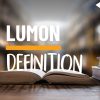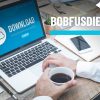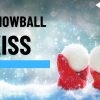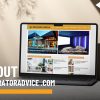It doesn’t take much thought to appreciate the fact that working on a construction site can be a dangerous occupation with so many potential dangers all around you, but despite improvements in safety standards over the years, there are still plenty of incidents reported each year.
Some accidents cause minor injuries but others cause life-changing injuries.
When something serious like this happens it might be that you end up visiting a site like https://866attylaw.com for information on what do if you need to make a claim. However, in order to try and avoid that scenario in the first place, here’s a look at some of the leading risks to be aware of if you are working on a construction site.
The cutting tool in your hand could cost you a limb – preparation is essential:
Mechanized cutting tools are a primary source of construction site injuries and it is grinders and cutters that tend to create the most amputation injuries.
As plenty of construction workers will no doubt agree, an angle grinder is one of the most versatile tools in your box but it can be one of the most dangerous if you don’t follow strict safety protocols every time you pick it up.
A typical angle grinder will operate at a speed of about 12,000 rpm, compared to a drill that runs at about a tenth of that speed, which should be ample warning that this is a tool that needs to be treated with respect.
Preparing your workspace for the job is essential and following some basic safety precautions will also minimize risk.
Unplug the grinder when changing discs, and ensure you have a firm grip on the grinder at all times.
The grinder guard is there for a reason, so use it, and the blade should always be spinning away from you.
The band saw safety:
Another piece of construction equipment that is a leading cause of amputation injuries is the band saw.
A good starting point is to ensure that you are fully trained to use woodworking machinery properly and safely and wearing safety glasses is a priority when you working with a tool like this.
If you are wearing gloves to protect your hands from splinters you should be mindful that wearing them while working near a rotating blade could cause your gloves to catch, with disastrous consequences for your fingers.
Don’t ignore the danger of lifting equipment:
While there are obvious dangers associated with using tools like cutters and grinders you might be surprised to discover that another significant source of amputation injuries is when you are using the lifting gear.
Cranes and excavators can create pinch-points where your limbs get trapped or an object falls on you.
Crushing, fractures, and dislocations are the major injuries on construction sites, with amputations not far behind, so it is clear that you have to be very mindful of the dangers each time you put on your safety hat and start your day’s work.
Many construction workers have tales to tell of lucky escapes and injuries to colleagues and if you follow safety rules and always think before you pick up your tools, hopefully, you can avoid becoming one of these statistics, especially when you consider how life-changing a loss of a limb can be.
Read Also:






















